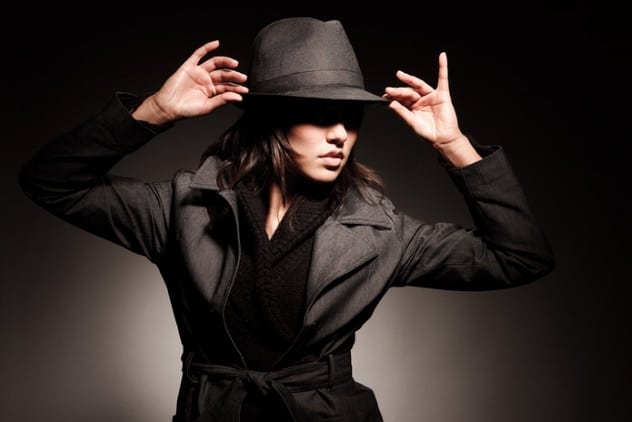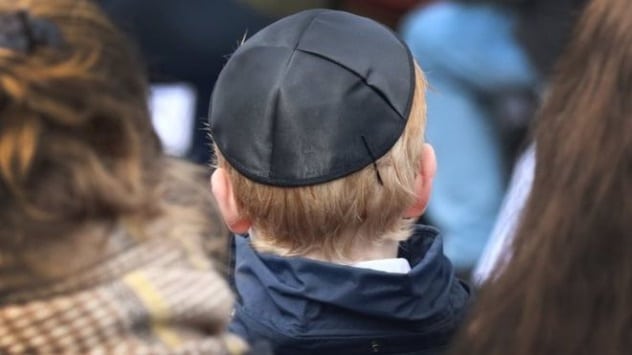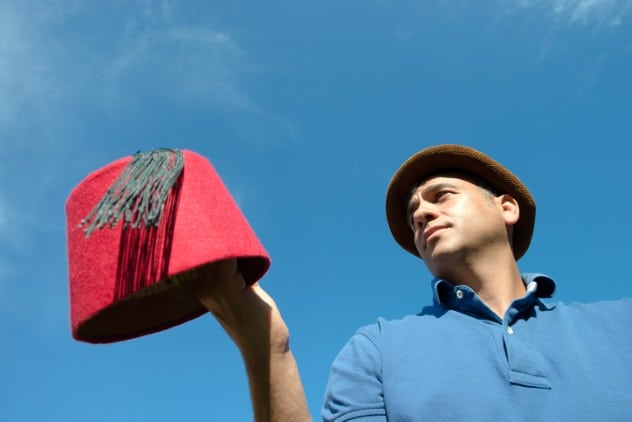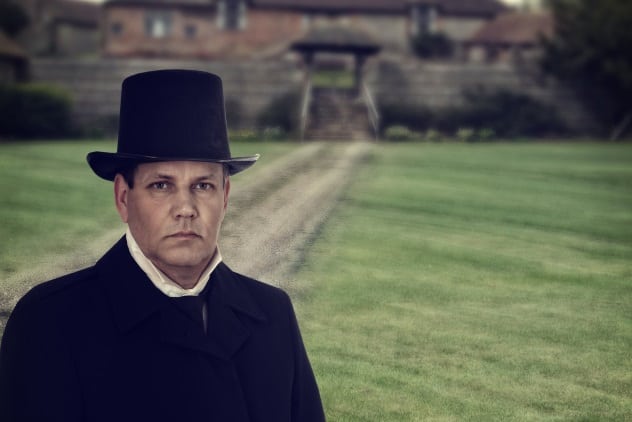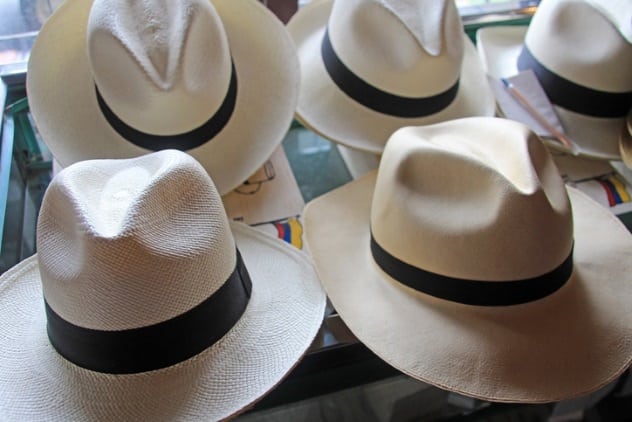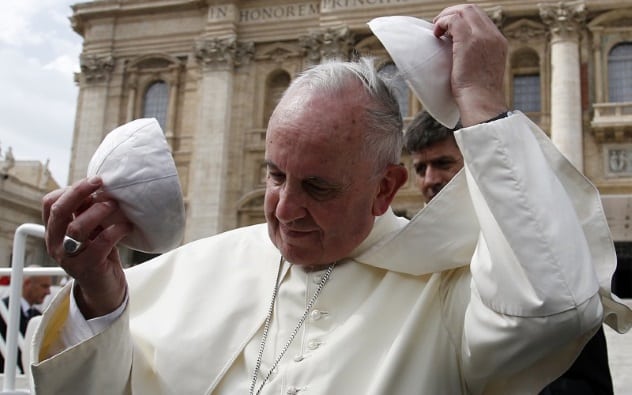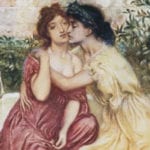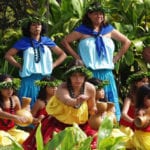Everything comes from somewhere. Even what we wear on our heads everyday can broadcast surprising messages or continue unexpected traditions. In many cases, a hat’s original connotations were the last thing you’d ever guess today.
10 Fedoras Represent Female Empowerment
While not exactly like the hat worn today, the fedora was once a costume piece in an 1880s play named Fedora. (The play was named after the lead character, a Russian princess, not the hat itself.) At the time, the fedora was a men’s hat, so being worn by a woman carried significant meaning, but the play made it an icon of female empowerment because the actress who played the princess was the strong-willed Sarah Bernhardt. Bernhardt was known for being sexually liberated and often took male roles. Her personality made her a symbol for women’s rights, and other women took to wearing her hat as a way to express their independence. As the fedora grew in popularity, it eventually became a staple of women’s fashion.[1] The fedora’s popularity increased, and while it retained the masculine image women wanted to claim as their own, its association with women’s rights was gradually forgotten. Both sexes were wearing the fedora, but an aggressive ad campaign focused on increasing its popularity among men, partially using the very same masculinity females had come to associate it with. By the 1920s, it had successfully migrated to men’s fashion to be worn by many of the famous (and notorious) figures of the time.
9 Chef Hats Have Secret Meanings
A chef’s hat, actually called a toque, isn’t just part of a chef’s uniform; it says a lot about the chef and his level of expertise. There are many different stories about how the modern chef’s hat came to be. One story, possibly legend, says that the hat’s history stretches back thousands of years to when Assyrian chefs wore pleated cloth headdresses like their king. Another legend says that it’s based off hats worn by cooks in Greek monasteries. The hat as seen today, though, is said to have been partially created when a chef named Antonin Careme put cardboard in his own hat to create the tall version of the headgear. Aside from its height, the most easily recognizable part of the hat itself are the famous pleats. There is an old saying that claims the 100 folds in a chef’s hat represent 100 ways to cook an egg, but this is most likely just a myth. The pleats are usually mistaken for nothing but a stylistic aesthetics, but the more pleats on the hat, the more skill and experience the chef has. Originally, a single pleat represented a recipe the chef had mastered. More pleats meant more recipes. This eventually became somewhat less about the number of recipes so much as a matter of experience. The height of the hat serves a similar purpose, with taller hats representing rank and knowledge.[2]
8 Native American Headdresses Look Nothing Like You Imagine
The Native American headdress (sometimes referred to as a warbonnet) is not something tribes take lightly. And while the well-known flared style seen in popular culture is used by Plains tribes, it is by no means the only kind. Headdresses are typically only worn by those who have achieved the rank of chief. But wearing the headdress is not a right the chief automatically receives, nor does the headgear even belong to them. It is a gift bestowed to those who have earned the tribe’s respect and belongs to the entire community. Many chiefs actually have multiple headdresses for multiple occasions, since, in modern times, they are used primarily for various ceremonies that may require different styles. Headdresses have actually been at the center of controversy among some indigenous communities. It caused a stir when Canadian prime minister Justin Trudeau was given one, as he is not a native member of any tribe, and some believed he should not have received one. Still other tribes do not allow women to be chiefs, which implies that they should not be able to wear a headdress, leading to implications of sexism.[3] It is important to note, though, that every indigenous tribe has their own identity and culture, and a tribe’s customs regarding headdresses (and everything else) are unique to their community.
7 Terrorism Is Endangering The Jewish Kippa
In some countries, fears of terrorism and hate crimes have the Jewish community debating whether or not to wear the kippa (aka kippah or yarmulke), a religious skullcap worn in public in Judaism. In 2016, a high school student in France who had immigrated from Turkey attacked a Jewish teacher with a butcher knife, claiming to be inspired by the Islamic State. This prompted one French rabbi to suggest that French Jews not wear the kippa until the acts of violence subsided. Other French rabbis called that manner of thinking defeatist, though, as well as many French politicians, who said that taking off such a strong symbol of religious identity would be a victory over French democracy. Another anti-Semitic attack in 2018 in Berlin saw the beating of a man for wearing a kippa by men speaking Arabic. The attack was filmed and posted online, where it quickly went viral.[4] The video again prompted some Jewish community leaders to advise against wearing the kippa in public places. But many from the Jewish and non-Jewish communities responded with “Wear a Kippa Day” in solidarity and in protest to anti-Semitism. Chancellor Merkel condemned the attack and stated that it is part of a greater fight against hate that the German people must win.
6 The Fez Is An Illegal Political Symbol
The fez (aka tarbush) has ancient origins, but it was only when Sultan Mahmud II of the Ottoman Empire made it a required part of his people’s garb that it exploded in popularity. It was later mandated as required headgear in Egypt as well, called a good hat for practicing Muslims since it fit well with some religious observations. During the reign of the Ottoman Empire, the fez symbolized modernity, which was ironic, since when the empire was overthrown, Turkey’s new leader outlawed the fez in order to modernize Turkey to appear more Western. Several men who refused to stop wearing the hat were executed. The ban then almost caused a diplomatic incident when an Egyptian ambassador to Turkey was asked to remove his fez before meeting with the Turkish leader. In Egypt, the fez still symbolized many positive aspects of faith and culture, so the diplomat refused to take it off and instead left the meeting. Yet later, Egypt likewise outlawed the hat during the Egyptian revolution for similar reasons as in Turkey. The “Hat Law” in Turkey stated that every man must wear an appropriate headdress. The law remained in place until 2015, when the requirement of wearing a hat was revoked. The fez ban remained in place, however, but the law is not enforced, and fez shops are not uncommon in some areas.[5]
5 Nightcaps Became Execution Hoods
Although not commonly worn today, anyone who has seen Charles Dickens’s A Christmas Carol is familiar with Ebenezer Scrooge’s long nightcap. Due to the lack of modern heating, nightcaps were often worn in the past to keep sleepers’ heads warm during cold nights. In prisons, where inmates often couldn’t benefit from the heat of fires, they were a valuable necessity. For prisoners destined to be sent to the gallows, though, the nightcaps served another purpose. From about 1850 onward, a white hood was provided to those sentenced to death by hanging to hide their faces during their final moments. Prior to this, execution hoods were the nightcaps the condemned wore to bed. Some went without, as not everyone could afford a hat, and women would sometimes opt for a veiled bonnet. Usually, the prisoner would march up to the gallows with their nightcap, and then in the final moments before they were hanged, the executioner pulled the cap over their heads to hide their final dying gasps from the gathered crowd.[6] That said, it may not have been a good idea to wear a nightcap/execution hood, since several people did indeed survive hanging, and a hood would have hidden their faces.
4 Top Hats Once Dominated Politics
Top hats went out of fashion when their expense and inconvenience caused lightweight, cloth hats to become popular. But even after they went out of style for the common man, they still had considerable influence in politics. It was tradition for a US president to be inaugurated wearing a top hat. Kennedy, however, killed the presidential hat. JFK actually followed the tradition of wearing a top hat for his inauguration, but he took it off for his speech in order appear more with the times. This spelled the beginning of the end for the inauguration hat. Johnson did not wear a hat and probably put the final nail in the top hat’s coffin. But the top hat was far more influential in the UK Parliament, where the wearing of one was an absolute necessity. It was so vital that one speaker even had to be “allowed” to wear a soft hat because a hard one “subjected him to headache.” There were very specific protocols for hat-wearing in Parliament. The hat had to be taken off when entering, put on when seated, and taken off again if rising. If a message from the queen was being delivered, it was hats off. To raise a point, the speaker was required to cover his head with a hat. The hat was so critical that if a Parliament member placed one on his seat and left, it meant he was reserving his place, since leaving without it was unimaginable. Eventually, the wide range of strict hat rules grated on members of Parliament. After calling it a “point of ridicule” for the organization, the requirements were eventually removed. Nowadays, any MP who wishes to speak is not even permitted to wear a hat.[7]
3 Panama Hats Are From Ecuador, And Some Are Works Of Art
Panama hats are not from Panama. They are made in Ecuador. The hat received its famous moniker when Ecuadorian hat weavers shipped their product north to laborers digging the Panama Canal.[8] The laborers’ hats stood out clearly in newspaper photographs, which lead to an increased demand. They grew even more famous when President Roosevelt wore one on a trip to the site. While you can buy a cheap Panama-style hat easily online, these are mostly imitations and not actually from Ecuador. Even in Ecuador, there are varying levels of craftsmanship that determine the value of a hat. The highest-quality hats, called Montecristi after the village where they are made, can sell for thousands of dollars. Even among Montecristi, there are different levels of quality, and the finest hats, expertly hand-woven from local straw, take months to create. There are only a handful of craftsmen left who can actually make the finest quality. Some hats have upwards of 3,000 weaves per square inch. Perhaps the greatest Panama hat ever woven was created in 2015, featuring 4,000 weaves per square inch, a feat exponentially harder than a 3,000-weave hat, which is no small feat itself. The 4,000-weave hat is so superior that dealers had a hard time putting a price tag on it. Some didn’t even want to, believing instead that it is a work of art that should be in a museum.
2 The Popular Image Of Sherlock Holmes’s Hat Is Wrong
The character of Sherlock Holmes was an eccentric, genius cocaine addict. But while the character was not normal in any sense of the word, he was always impeccably dressed. This is why the iconic image of Holmes wearing the ear-flapped deerstalker hat popularized by Sidney Paget’s drawings of him for The Strand Magazine were at odds with the character himself. Sir Arthur Conan Doyle’s books indeed had Holmes traveling the countryside in a hat whose description matched the deerstalker, which was why Paget drew him wearing one. But deerstalkers were used exclusively in the country (hence the name “deerstalker,” as it was meant for being used outdoors while hunting deer). It was not a city hat, and Holmes walking through the city wearing one would have been like wearing a modern-day neon orange hunting cap while strolling down Fifth Avenue in Manhattan. Holmes wouldn’t have been caught dead in one.[9] Also, the hat was intended for use when hunting deer, and Holmes was never depicted as a hunter himself, so it was somewhat odd that he owned one at all. While Holmes was a man with a good sense of fashion, he very well could have simply been that eccentric.
1 The Pope Might Swap Hats With You
If he likes it, the pope might trade his skullcap with you. The hat is called a zucchetto, and there’s an tradition of papal hat exchange dating back to Pope Pius X, when pilgrims would present the pope with a skullcap in the hopes of making a trade. Pilgrims cannot offer just any zuchetto, though, as it’s expected that the skullcap be ordered from and made by the official papal zucchetto tailor in Italy. Adherence to the tradition varies from pope to pope, and since it is not very well-known compared to more important Catholic traditions, popes sometimes need to be introduced to the practice by their staff the first time an exchange is offered. Some popes did not participate in the papal hat exchange very often, and others simply tried the offered hat on then returned it a few moments later. Pope Francis has been known to swap hats with those who offer him zucchettos on occasion, however, so it is possible for you to own a hat worn by a pope. Some of the hats people received in the exchange become cherished souvenirs, while others are sold for charity auctions—or on eBay. If you want to try and swap hats with the pope, though, you still have to not only buy them through the correct tailor but correctly guess the pope’s size.[10] Mike lives on the East Coast and pays too much for beach parking on the weekends.
